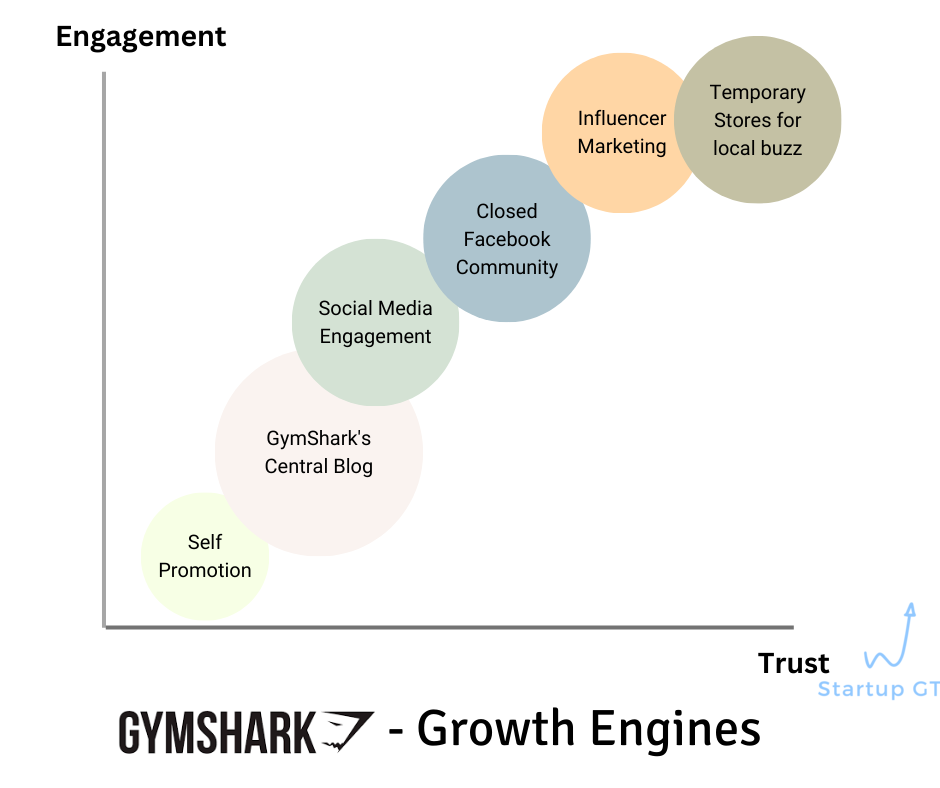How a D2C brand crossed over £1 billion valuation in just 8 years - Community-led Growth Case Study
Explore the journey of a D2C brand that skyrocketed to a £1 billion valuation in merely 8 years. Dive into this case study to uncover the power of community-led growth.
We have seen successful brands like GymShark, ItzyRitzy, Glow Recipe follow a community led approach as major growth drivers. The common point being building communities on Social Media Platforms just with a simple framework of Community-led Growth i.e. CLG - Engagement Decision Matrix.
Let’s see what GymShark has done to reach the Category-Dialogue Quadrant.
GymShark
Gymshark is a British fitness apparel and accessories manufacturer and retailer headquartered in Solihull, England. Founded in June 2012, Gymshark creates and distributes its own range of fitness wear. In 2020, the company was valued at over £1 billion.
The focus of their growth has been built around social media and brand strategy to leverage the power of community.
1. Influencer marketing for community building:
Gymshark partnered with a bunch of social influencers and transformed them into their ambassadors. Each of these ambassadors has hundreds and thousands of followers on many social media channels and they enabled fan dialogues on fitness i.e. inspiration, motivation, health, diet etc.
2. Social Media for Engagement
Gymshark soon expanded its social media strategy into an engaging community by sponsoring various fitness Instagrammers, YouTubers, and bloggers. To engage their ambassadors and products with their customers or community, they organised meet-ups. Before any event happens, the influencers will connect with their fans to tell them how much they can’t wait to meet them, and how much they love their fans. This approach is a huge investment in their ROI but also in their brand ethos.
3. Community Thinking
In their main @gymshark instagram account, they don’t add a link to their product page, instead a link to their campaign or event. Why? Because their main goal is to educate and engage with their followers (community members), which eventually drives their sales.
4. Closed Community on Facebook
Gymshark has over 1.5M loyal Facebook fans who are always engaging with the brand. On this network, they often share pictures of their fitness athletes to inspire their followers and communicate with them. Apart from the official account, Gymshark also created the Gymshark Community Facebook group (having 38K Members). This group is dedicated to strengthening the connection between Gymshark and their followers. Every member can share their fitness journey and get inspired by the stories of others.
5. Gymshark Central Blog
Gymshark Central is full of articles with tips, tutorials, and recipes which provide customers useful information about health and fitness. By offering this, Gymshark has clearly positioned them as their fans’ go-to source for health and fitness.
6. Open pop-up (temporary) stores to reach local, build buzz, and boost revenue
From its core, Gymshark has always been a brand looking to engage face to face with its customers. After a few years attending trade shows, Gymshark’s guys realised this wasn’t the best avenue to create the best in-person experiences. They decided to stop doing trade shows and experimented with pop-up stores. They tried to keep the same experiences as they used to do at trade shows while bringing in their awesome team of athletes to meet face-to-face with their fans. Doing this, Gymshark could raise awareness of their new products, educate their fans, boost sales, and take free product returns.
Gymshark was good at combining social interactions with customers’ strong purchase intent. This is most clear at many of their pop-up stores that spring up across the UK. They featured special sales, live classes, demonstrations, and their athletes’ appearance, which attracted their fans’ attention and got them to wait for hours for the doors to open in the hope of scooping up some exclusive gear and meeting up with other like-minded people.
Summarising the pointers for any D2C brand to follow community-led growth approach:
Define the Purpose and Community Member Profile,
Building a follower community on Social Media to enable dialogue
Building an exclusive community of highly engaged audience to enable trust
Double down on activities to trigger engagement and dialogue
Capture brand advocacy - UGC, Ratings, Reviews
Monetising - Building subtle bridges in engagement levers
Ready to supercharge your startup's go-to-market strategy? Subscribe to our newsletter for exclusive insights, tips, and expert advice. Plus, schedule a 1:1 GTM brainstorming meeting with Ayush through Calendly link!






